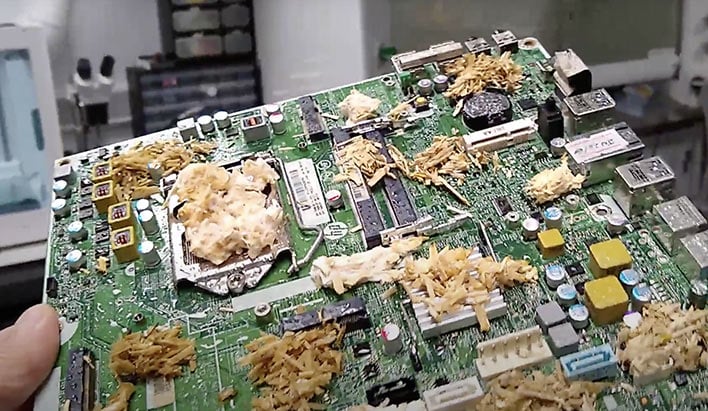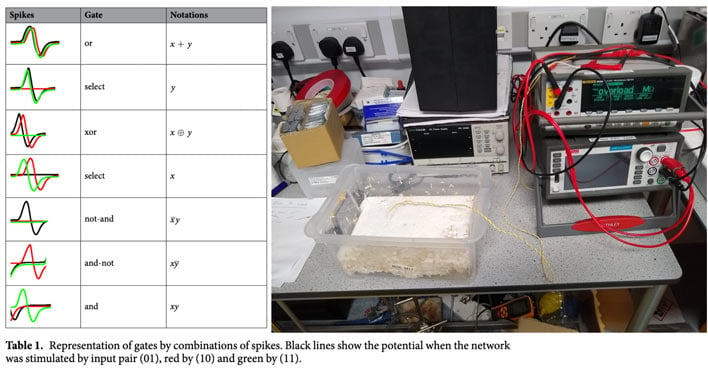What The Fungi? Scientists Create A Living Motherboard Made With Mushrooms

Founded in 2001, the Unconventional Computing Laboratory at the University of the West of England in Bristol, UK, is behind the headlining work. The lab certainly lives up to its name with its research involving fungi. At the university is the UK’s only so-called ‘wet lab’, which mixes chemicals, liquids, biological matter and electronics to search for breakthroughs in computing.
One of the repeating themes of the lab is looking at how nature computes, and elements of nature that can be used by humans to fit into practical computer systems. The lab also readily acknowledges the limits of classical computing with binary data. Biological computer components could break away from binary similarly to quantum computers and/or neuromorphic computers.
Andrew Adamatzky, director of the Unconventional Computing Laboratory, has enjoyed previous success in slime mold computers, but that’s another story. His more recent work has pioneered both fungal computing and fungal electronics. Adamatzky found that mycelium reacts to electrical pulses similarly to brain neurons, and thus it is expected that this living organism could be used for artificial neural network based computers.
Spiking responses from the stimulated mycelium are more complex than the classical computing zeros and ones. A spike could be read as a one, and the absence of a spike as a zero, with the timing and spacing of the spikes read for greater dimensions or the representation of various logic gates. It has also been discovered that different fungi have different geometries, which can compute different logical functions. The lab has been working with oyster fungi (Pleurotus djamor), ghost fungi (Omphalotus nidiformis), bracket fungi (Ganoderma resinaceum), Enoki fungi (Flammulina velutipes), split gill fungi (Schizophyllum commune) and caterpillar fungi (Cordyceps militari) during the feasibility studies.
We’ve already highlighted some of the advantages of fungal computing, like the way fungus is a good fit for neuromorphic computer architectures, but there are more. Probably one of the more excitingly futuristic qualities of a mycelium-based computer would be that, like the organism, it should be highly fault-tolerant and be able to self-regenerate. Also, if there was ever the need for a fungus supercomputer, there have been fungus specimens recorded as large as 2,384 acres, or nearly four square miles in size (an armillaria ostoyae in Oregon).
Top Image: Humorous fungus motherboard visual created by the researchers
Top Image: Humorous fungus motherboard visual created by the researchers


